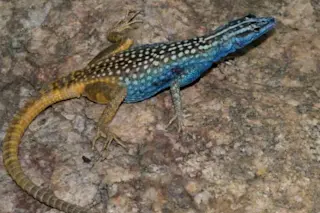There's a concept in economics that I've always been a bit fascinated by called a Veblen good. The basic idea: A product or service for which demand goes up the more expensive it gets.
It runs totally counter to the normal precepts of economics, but there's a logic to it. For some things, works of fine art, say, or luxury cars, it's not the physical object itself that's desired, but what it represents.
Like Nic Cage buying a dinosaur skull, it's a statement that you can afford to spend money simply for its own sake — an economic power play. The more expensive a Veblen good gets, the more symbolic value is attached to it and it's worth more.
I'm intrigued by the concept because it feels uniquely human — who else but us to revel in such an abstract expression of dominance. But, that's really not true.
The animal ...














